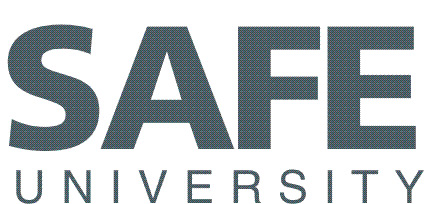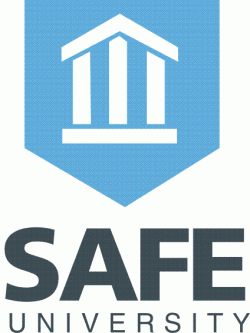Conscientious and well-informed university personnel know that adequate staffing, multi-disciplinary involvement, sufficient resources, appropriate policies, and external support make these incidents less likely to occur—and make leaders more prepared if they do. Safe University (Safe U) partners with you to supplement and enhance your existing security programs by tailoring best practices to your unique situation and campus culture
To Save and Protect: Independent Security Study Does Both
How safe and secure do your employees feel? They might be harassed or threatened by co-workers or visitors, or exposed to some other type of workplace violence. Or maybe your CEO has received threats from a customer dissatisfied with your organization’s product or service. From C-suite to entry level employees, you must be committed to security as a 24/7 objective.
What is great security—and how do you know if you have it?
You might know what great music sounds like or great pizza tastes like, but do you know what great security looks like? Great security follows best practices to successfully protect your people from any hazards they might face in the workplace.
And great security is achieved through a security assessment that helps you understand what you have and benchmarks it with best practices and other organizations who are doing it right to determine what you need. A security assessment ensures that physical, technical, procedural, and personnel security measures are working together to protect your people, property, and assets.
What is an independent security study and why do you need it?
Especially if your organization or CEO is high profile, a security assessment must look at security across the enterprise, like transportation, private residences, personal protection, and other activities related to your executive protection (EP) operations and corporate security (CS) program. That’s when the assessment becomes the foundation of an independent security study (ISS). Not only will an ISS protect your employees, but it will also evaluate EP and CS, and how well you identify, assess, and manage threats to individuals and the organization itself. Plus, the ISS allows your organization’s leadership to avoid unnecessary tax liability as it relates to executive protection.
You can’t conduct the study yourself—that’s why it’s independent.
An important part of the IRS compliance is that the study must be done by an outsider—that’s why it’s independent. In other words, you can’t conduct your own assessment. The net result of the ISS conducted by an independent consultant is an evaluation of your personnel, programs, policies, technologies, operations, and current security environment to identify areas of strength along with opportunities for improvement.
Benchmarking, United States Secret Service, and IRS compliance—a dynamic trio.
Your EP might include air travel, airport protection, ground transportation, and a traveling protective detail to ensure the safety of company executives, especially if they travel internationally. The IRS taxes the gross income of those executives for transportation security costs—unless you can show a bona fide business-oriented security concern for the protection provided. An ISS meets the necessary requirements for the IRS to avoid this tax, saving your CEO money.
Does the CEO travel to countries with known terrorist activity? Does a driver transport the CEO from home to work and back? Does the CEO travel by private plane? The ISS dives deeply into your EP operations to document current measures and offers industry best practices to mitigate threats and strengthen overall security.
By working with The Lake Forest Group, you optimize the value of this outside relationship through benchmarking and extensive experience. Because of our varied client list, we can connect you to best practices that transcend industries so you can learn from organizations you would rarely have contact with otherwise. And as I assess your CS program and specifically EP operations, I will rely on my experiences as a Secret Service agent who protected the President and First Lady in the President’s Protective Detail, investigated threats to the President, and identified risk in a variety of locations, circumstances, and appearances.
Leveraging the USSS methodology in your ISS, we evaluate your:
• EP operations, including drivers, vehicles, corporate or private aircraft, airport locations and personnel, risk level where the executive travels, advance and traveling details, and any additional activities designed to safeguard your CEO and select executives
• Physical, technical, procedural, and personnel security at corporate, residential, and transportation-related properties
• Coordination with internal stakeholders including HR, facilities, security, finance, and legal to maximize communication and risk management effectiveness across departments
• Cooperation with external stakeholders to support security initiatives, including local first responders, open source and social media analysts, and response monitoring station personnel
A holistic strategy guarantees your security is greater than the sum of its parts.
As we conduct the ISS, we look at each element of your security environment at corporate properties, private residences of executives, and locations, equipment, and personnel that support air and ground transportation. Because each part of EP is intrinsically interrelated with another and EP in turn is inherently connected to physical, technical, procedural, and personnel security measures at every location and in every function, your ability to protect your executives as well as your employees depends on a holistic security strategy.
The ISS ensures that holistic security strategy as we offer strategic considerations to enhance existing measures. It also complies with IRS requirements to validate employer-provided transportation for business-oriented security concerns and overall security programs and specifically exclude those costs and items from the executive’s gross income.




 When the safety of your people is one of your top priorities and your college’s reputation is one of your most valuable assets, you’ll do whatever it takes to provide a safe environment for your students, staff, and visitors. High profile incidents such as mass shootings and sexual attacks at several universities have put the topic of campus crime in the public eye today more than ever before.
When the safety of your people is one of your top priorities and your college’s reputation is one of your most valuable assets, you’ll do whatever it takes to provide a safe environment for your students, staff, and visitors. High profile incidents such as mass shootings and sexual attacks at several universities have put the topic of campus crime in the public eye today more than ever before.

